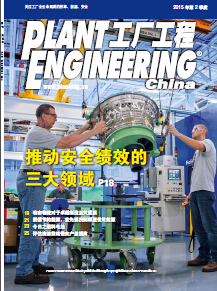By implementing a product lifecyclemanagement (PLM) system, companiesboth large and small benefit by simplifyingand shortening each phase of the productdevelopment process. However, decidingwhether or not to adopt PLM software hasbeen a challenge for smaller organizationsdue to PLM’s reputation of being difficultto implement, requiring a great deal ofresources to maintain, and having excessiveinitial and long-term costs.
The availability of PLM systems specificallydesigned for the small to midsizemarket has helped to alleviate concernsand opened a door for small to midsizemanufacturing businesses (SMBs) tobe able to take advantage of PLM, andrealize the same benefits as their largercounterparts.
For SMBs (who for the purposes of thisarticle range from start-ups to those with $500 million in revenue) that are hesitantto adopt PLM, here are the top five reasonswhy they should consider movingforward and investigate solutions.
Benefit 1: Reduce independent systemsand separate silos of data
PLM provides a central location totrack and manage all product-relatedinformation such as component data,bill of materials (BOMs), product documentation,engineering changes andrevisions, quality issues, and compliancedata.
These systems reduce the numberof manual/homegrown systems thatare commonly used by SMBs (such asExcel spreadsheets, network files andfolders, and paper process) for managingengineering documents/drawings,datasheets, and manufacturing files, andprovide a single system for all users toaccess this information. Streamlining product information, improvesknowledge sharing, and supports betterdesign processes.
Benefit 2: Improve communication/collaboration among all teammembers
Many SMBs rely on relationshipswith a number of suppliers to help bringtheir products to market. PLM facilitates the secure sharing of product informationamong internal and external teammembers; streamlines the communicationof information such as new products,changes, revisions, and configurations;and provides automated alerting andapproval tracking processes.
Benefit 3: Meet growing compliancerequirements and industry standards
Regulatory requirements such asRestriction of Hazardous Substances,REACH (Regulation on Registration,Evaluation, Authorization and Restrictionof Chemicals), as well as those fromthe FDA and ISO create additional pressures.These companies are faced with thechallenge of how to handle their productdesign and development to meet guidelines,and the cost of noncompliance canbe detrimental to an SMB.
In order to meet and maintain compliance,manufacturing companies need tomanage data pertaining to the contentsof purchased and manufactured goods,as well as document how products are built and modified. Historical data mustbe maintained on all goods and services.
PLM systems facilitate compliancemanagement by storing all compliancedata, automatically tracking all productchanges, and providing the necessaryauditing reports. This helps SMBs toalleviate the cost of managing compliancedata and ensure proper processesare in place for successful audits.
Benefit 4: Gain a competitiveadvantage
PLM provides key functionality tostreamline each phase of a product’slifecycle from product conception anddesign to manufacturing and support,which reduces time-to-market, decreasesproduct costs, dramatically reduceswaste and rework, speeds new productintroduction (NPI) cycles, and improvesproduct quality.
Getting new products to market fasteris critical for success. PLM can help positionan SMB to gain a competitive edgeover larger competitors.
Benefit 5: Solutions designed forsmall to midsize manufacturers
Created with the SMB in mind, PLMsolutions specifically designed for thismarket have a quicker implementationprocess and can have a company up andrunning within days or weeks with littleor no disruption in operations. ThesePLM systems deliver price points andmaintenance costs to support a fasterreturn on investment and lower total costof ownership, while still providing robustfunctionality so it can carry a companyfrom start-up to the $500 million revenuerange with multiple manufacturing anddesign sites.
PLM systems designed for SMBsare developed from an entirely differentangle than a solution that has beenscaled down from a larger system, whichinherits the legacy foundation’s implementationcycles and IT maintenancerequirements.
Five ways manufacturers benefit from PLM
发布时间:2013-03-08 作者:www.plantengineering.com
摘要:For SMBs (who for the purposes of thisarticle range from start-ups to those with $500 million in revenue) that are hesitantto adopt PLM, here are the top five reasonswhy they should consider movingforward and investigate solutions.
版权所有:本文为工厂工程网原创或海外授权,任何媒体和个人全部或部分转载请务必注明出处。








.jpg)






 关注本刊微信订阅号
关注本刊微信订阅号